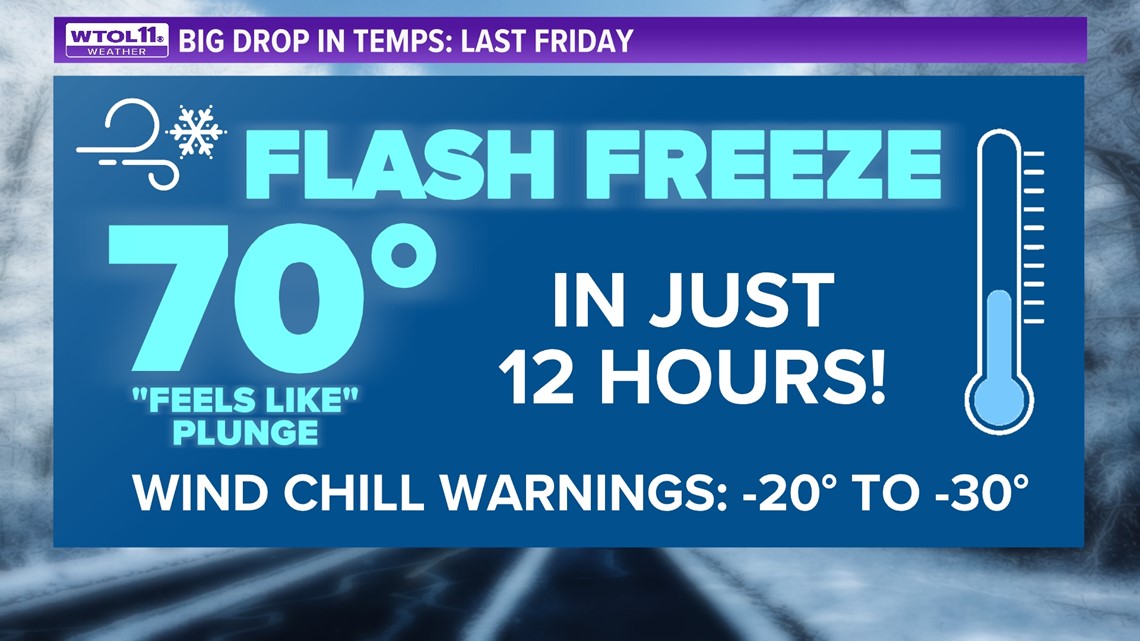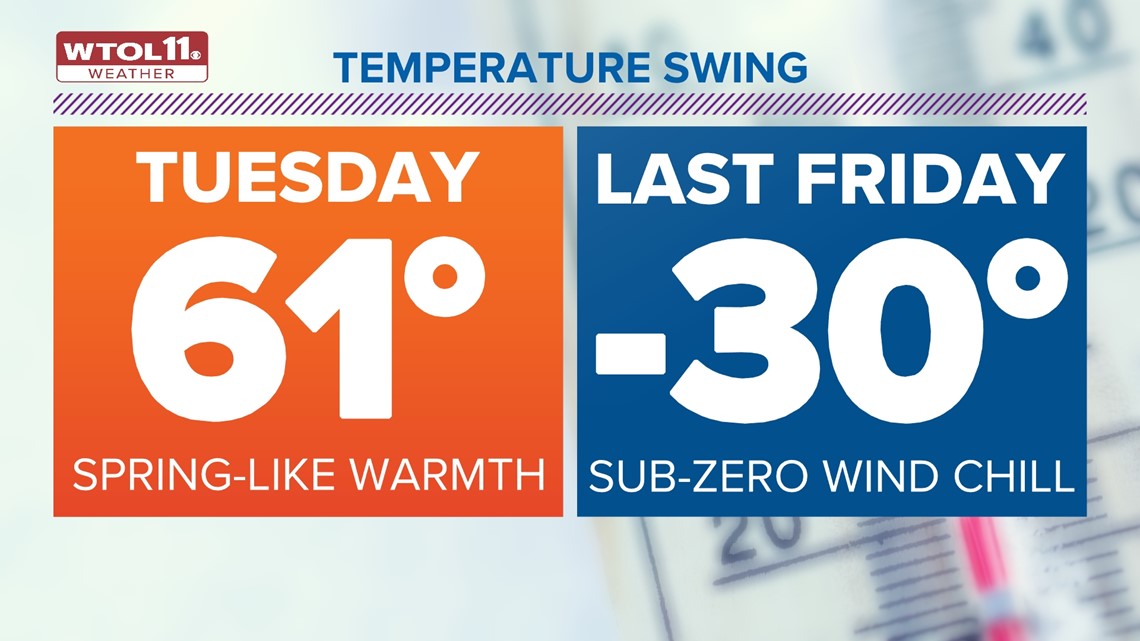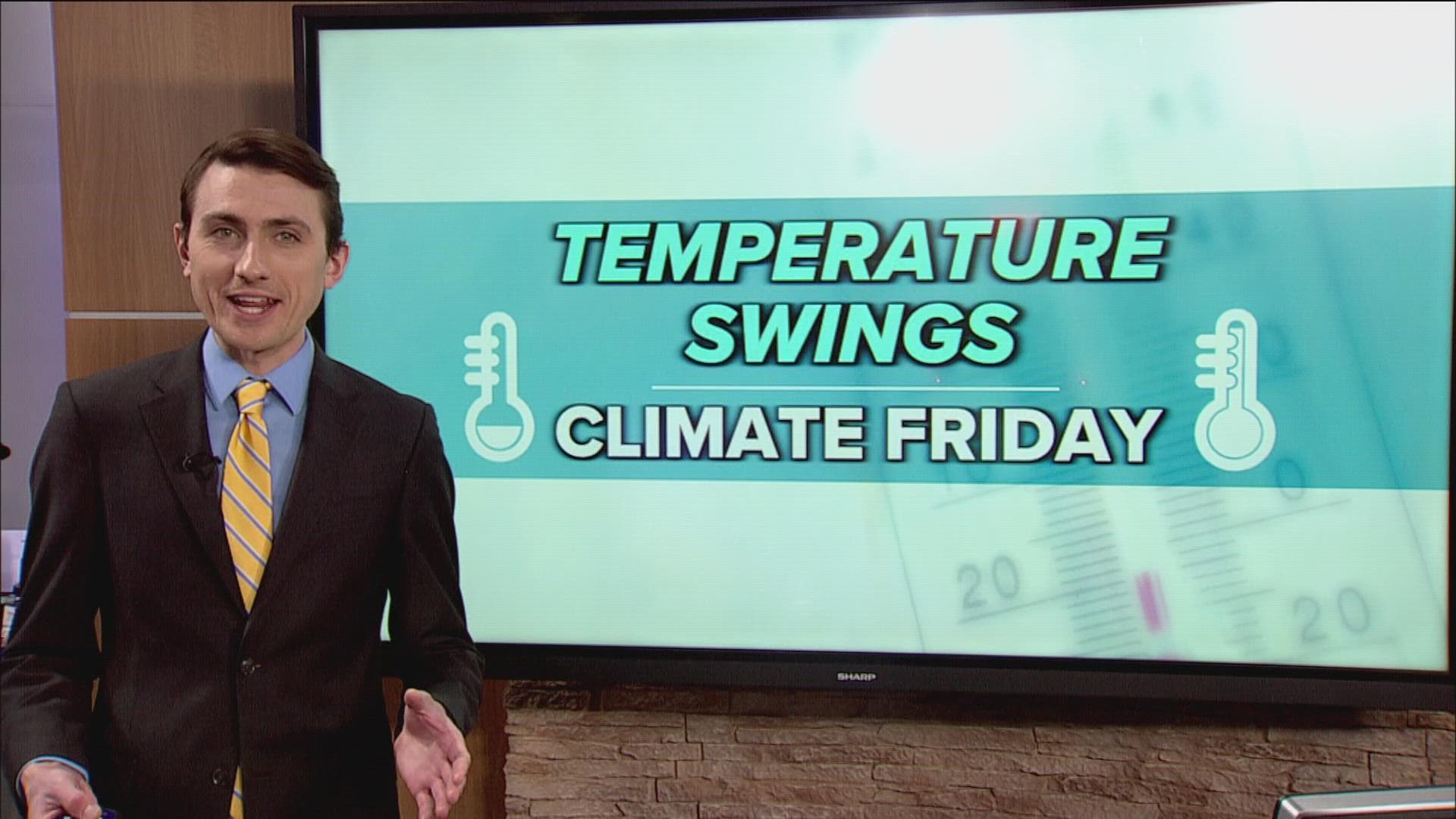TOLEDO, Ohio — From arctic wind chills to spring-like warmth, this week has delivered a vast array of weather conditions.
One week ago, a historic winter storm dosed out gale-force winds and blowing snow drifts across the region, delaying holiday travel for millions. After a bitterly cold Christmas weekend, temperatures climbed and snow melted. This week's thaw kicked off a spring-like warmup as temperatures soared to the 50s.
The WTOL 11 weather team is forecasting even warmer weather next week as high temperatures make a run for 60 degrees. From arctic cold to balmy warmth, these temperature extremes represent the fingerprint of climate change.
While temperature swings are growing more erratic, they are not inherently caused by climate change. The jet stream dictates day-to-day weather patterns, serving as the conveyor belt that delivers both storm systems and temperature changes.
Winter Storm Elliott was caused by a drastic dip in the jet stream, which brought bitterly cold polar air to the Midwest and dosed out freezing temperatures as far south as Florida.
This week's warmup was caused by a ridge in the jet stream that ushered in a mild southwesterly breeze.
Shifts in the jet stream account for short-term variations in the weather, including temperature extremes, such as the ones felt last week.


But what role does climate change play in these temperature swings?
Historically, the winter season is known for its bitter temperatures and blockbuster snowstorms. Although there are still cold snaps and heavy snow in the Midwest, both are growing less likely due to global warming.
On the whole, there is less extreme cold during the winter months. Extreme cold is growing less severe in terms of the coldest temperature recorded each year.
In 1970, Toledo's coldest day of the year was around minus 14 degrees. Pretty cold, huh? By the turn of the millennium, the coldest winter day was typically only about minus 7 degrees. Now, the coldest day of the year is only a few degrees below zero.
Analysis of this data from the last 50 years reveals that the coldest day of the year has warmed up by a whopping 10.7 degrees.


This drastic shift in extreme cold is largely due to anthropogenic climate change. Even with this overall warming trend, bitterly cold days will still occur.
Winter Storm Elliott, for example, brought a low temperature of minus 3 degrees to kick off the holiday weekend.
But the temperature doesn't tell the whole story.
Wind chills plummeted as low as minus 30 degrees as arctic air barreled into the region. Going from minus 30-degree wind chills to 61 degrees temperatures, this week will bring a historic temperature swing as the "feels like" temperature climbs over 90 degrees.


Even though the jet stream causes extreme temperatures and vast fluctuations, weather data over the past century and a half is very clear that winter weather is growing warmer due to climate change.
Winter warming has impacted every single state, and the eastern half of the United States has felt the greatest uptick in winter temperatures. December has warmed up 3 degrees in the past decade, and by about 5 degrees since 1970, in Toledo.
Of all 12 months, December is the one that has warmed up the most due to climate change. Global warming has made winter weather much milder, on average. Even when cold spells do strike, they are usually less severe and short-lived. In the future, winter weather will continue to warm up as extreme cold becomes less frequent and extreme.


After a roller coaster of weather in the past week, temperatures will settle down this week, remaining slightly milder than average. The 10-day forecast shows temperatures primarily in the 40s without any major cold snaps.
Whatever weather Mother Nature has in store, the WTOL 11 weather team will track it in the latest forecast. Be sure to subscribe to the Climate Friday Newsletter for weekly content on climate change and how it impacts you.
Want more from WTOL 11?
➡️ Download the WTOL 11 news app for Apple here or get it in the Google store here.
➡️ Get a fresh start to your morning and wrap up your day with the latest news and your WTOL 11 Weather forecast delivered right to your inbox!
WTOL 11's Your Morning Blast and Your Evening Blast deliver stories from northwest Ohio, southeast Michigan and beyond to keep you informed.
Click here to get on the list!

